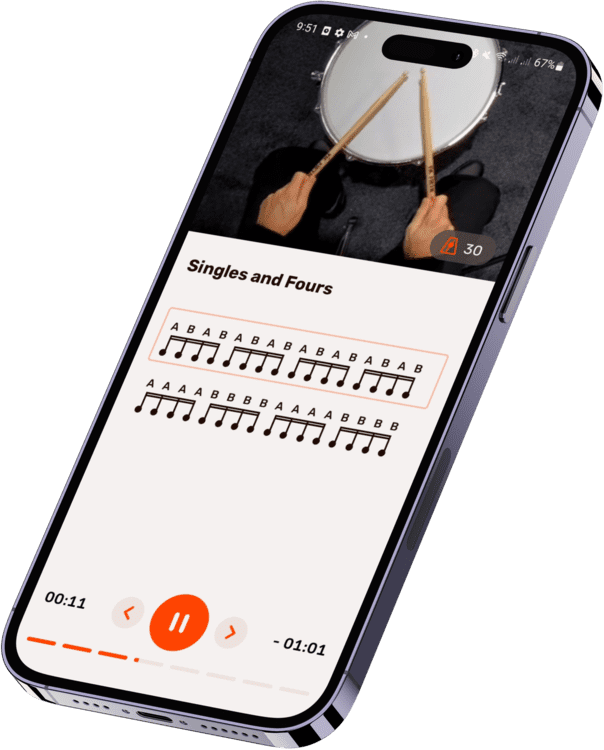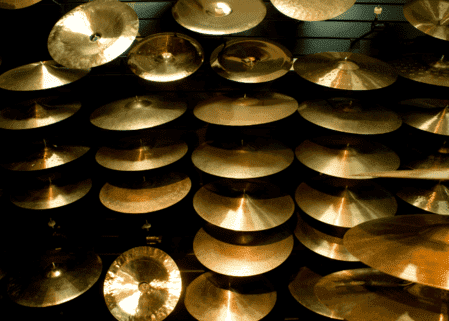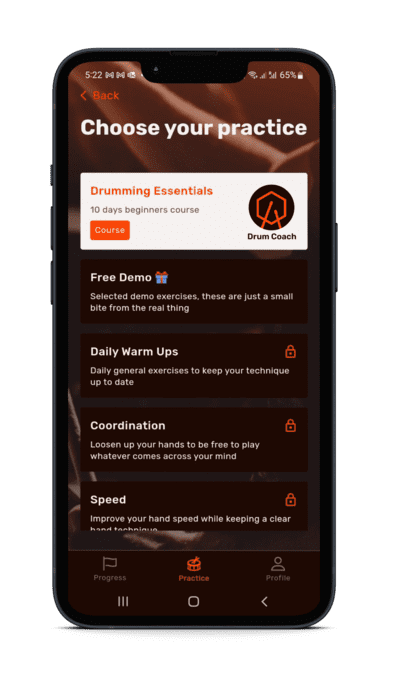Ready to elevate your drumming skills? Start your journey to greatness with Drum Coach! Dive into our drumming essentials course designed for beginners and enjoy:
? 5 minutes of fun, daily exercises.
? A beginner-friendly approach to improve steadily.
? Engaging lessons that make learning easy and effective.
Hey groovers! Today, we’re diving deep into the heartbeat of any band—the drum set. Understanding each component of this percussion powerhouse not only enhances your playing but also enriches your musical knowledge. Whether you’re setting up your first kit or tweaking your seasoned setup, here’s your essential guide to the parts of a drum set.
Take a look at other content that might interest you:
- How to Clean a Drum Set: A Comprehensive Guide
- The Best Drum App to learn and improve your drumming
- Drum terminology: Your Drumming Reference Guide
The Foundation: Bass Drum
The bass drum, or kick drum, lays the rhythmic foundation of your groove. Positioned on the floor, it’s played using a foot pedal and produces a deep, resonant boom that drives the pulse of the music. Ideal for genres like rock, jazz, and hip-hop, its sound can be modified by adding padding inside the drum shell. Experiment with different beaters—felt, plastic, or wood—to find your unique sound.
Find your perfect practice routine with Drum Coach with drumming exercises tailored for all levels. With Drum Coach you get:
- Drums lessons crafted by Mariano Steimberg, professional drummer, and professor at Berklee College of Music.
- Unlock over 500 drum exercises and rudiments
- Start Free with the Drumming Essentials course. No fancy gear needed!

The Rhythmic Core: Snare Drum
Sitting at the center of your drum set, the snare drum is known for its sharp, cracking sound. A crucial part of any drum kit, it features a set of wires stretched across the bottom head, which vibrates when the top is struck. This drum is your go-to for backbeats, rolls, and fills across all music genres, from jazz to metal. Adjust the snare wires to tailor the crispness and responsiveness to your playing style.
Versatility Up Top: Toms
Toms or tom-toms add melodic nuances to your drumming. Mounted either above the bass drum (rack toms) or on the floor (floor toms), they come in various sizes, each producing different pitches. Use these for dramatic fills and to add depth to your sound. Smaller toms deliver higher pitches, perfect for quick, articulate sequences, while larger ones provide the boomy lows ideal for rock and fusion styles.
Cymbals: The Spice of Your Kit
Cymbals are the metallic accents that range in sound from shimmering sustains to explosive crashes. Here’s a quick breakdown:
- Hi-Hats: Two cymbals mounted together, played closed or open for a variety of sounds, essential for keeping rhythm in most styles.
- Crash Cymbals: Accentuate the climax of a song with their loud, sharp sound.
- Ride Cymbal: Offers a sustained sound and is commonly used for pattern playing in jazz and rock.

An important part of the drum set are the cymbals
You may also find interesting:
- The Best Drum Songs in Music History
- Top Beginner Drum Set Guide. How to find your perfect kit?
- The 25 Best Drummers of All Time
Enhancing Setup: Hardware and Accessories
Your drum set’s reliability and playability depend significantly on the quality of your hardware. This includes stands for snare and cymbals, a throne (drum seat), and pedals for the hi-hat and bass drum. For added flair and functionality, explore accessories like cowbells, woodblocks, and electronic pads, which can all be integrated into your setup for a more dynamic performance.
Setting Up for Success: Ergonomics and Comfort
To maximize your drumming potential, set up your kit ergonomically. Adjust the heights and angles of your drums and cymbals to avoid strain and improve your technique. Remember, a comfortable drummer is a more effective drummer.
Actionable Tips:
- Experiment with Head Types: Change the drum heads for different tones.
- Tune Regularly: Learn how to tune your drums to maintain their sound quality.
- Practice Techniques: Utilize various drumming techniques to expand your versatility and adaptability across genres.
- Maintain Your Gear: Regular cleaning and maintenance ensure your drum set sounds great and lasts longer.
Drumming is an art that requires not just skill but also a deep understanding of your instruments. By knowing the parts of your drum set and how to use them effectively, you’re well on your way to becoming a masterful drummer. Keep the beat, explore new rhythms, and most importantly, enjoy the journey!
Get your drumming to the next level in just 10 days ?
Find your perfect practice routine with Drum Coach with exercises tailored for all levels. With Drum Coach you get:
- Drums lessons crafted by Mariano Steimberg, professional drummer, and professor at Berklee College of Music.
- Unlock over 500 drum exercises and rudiments
- Start Free with the Drumming Essentials course. No fancy gear needed!

Get ready to take your drumming to the next level. Get expert tips on coordination, drumming techniques, improvisation and more in the post titled “Charting Your Drumming Journey”. / Written by: Raul Rodrigues: CEO of Drumap, Drummer, Music School Director and Mariano Steimberg: Drum Professor at Berklee College of Music, Valencia Campus.










